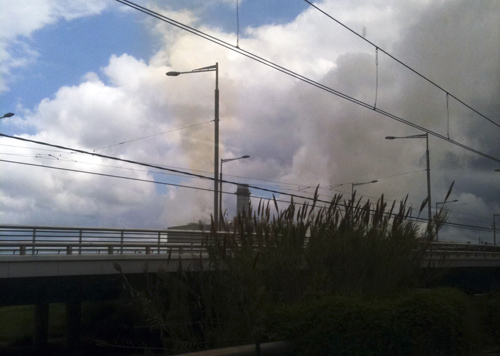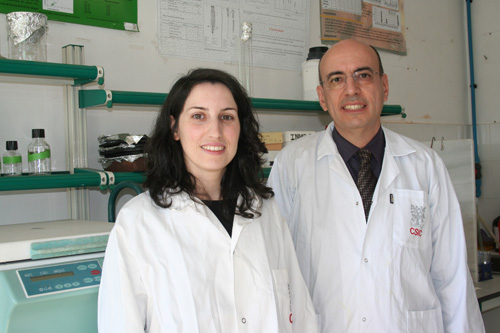The objective of "HEALS" is to develop an integrated methodology for the identification and decoding of an individual´s exposome, i.e. the mapping of the totality of exposures to toxic substances and environmental risk factors that predispose to and predict certain diseases throughout a person´s life span
- The work will focus especially on the most vulnerable population groups: children, pregnant women and the elderly. The main health outcomes that will be assessed are allergy and asthma, neurological development and neurodegenerative disorders, obesity and childhood diabetes
- The project -which has a budget of 14.8 M € and is co-funded by the 7th Frame Program- will be carried out by a consortium composed of 29 partners from 15 countries, three of which are Catalan: the Barcelona Science Park, the Institute of Environmental Assessment and Water Studies (IDAEA) of the CSIC (Spanish National Research Council) and the Centre for Environmental, Food and Toxicological Technology (TecnATox) at the University Rovira i Virgili (URV)

The European Project "HEALS" (acronym for 'Health and Environment - Wide Associations based on Large Population Survey') has officially started. The objective of the project is to develop an integrated methodology to identify and decode an individual’s exposome; that is, the mapping of the totality of exposures to toxic compounds and environmental stressors throughout a person´s life span, from conception onwards. The project also envisages the design of risk assessment tools to analyze the effects of exposure on people´s health.
The project has a duration of five years and a budget of 14.8 M€. It is co-funded by the European Union's 7th Framework Program and it will be implemented by an international consortium, led by the Université Pierre et Marie Curie and formed by 29 partners from 15 European countries. Three of the partners are from Catalonia, Spain: the Barcelona Science Park (UTOX and Proteomics platforms); the Institute of Environmental Assessment and Water Studies (IDAEA) of the CSIC (Spanish National Research Council) and the Centre for Environmental, Food and Toxicological Technology (TecnATox) at the University Rovira i Virgili (URV).
The objective of the exposome is to be used as a tool aimed at simultaneously identifying, characterizing and quantifying the exogenous and endogenous exposures to contaminants, that is, those modifiable risk factors that predispose to and predict environmental-related diseases throughout a person´s life span. Assessing the exposome implies that both environmental exposures and genetic variations are reliably measured simultaneously.
Members of the HEALS consortium will work together towards the refinement of an integrated methodology and the application of the corresponding analytical and computational tools for performing association-wide studies seeking associations between health outcomes and environmental stressors such as socio-economic, nutritional and environmental exposure-related factors. The main aim is to draw a "map" of exposure to environmental contaminants throughout a person´s entire life span, taking into account changes in the place of residence and hence exposure changes. Exposure also includes non-chemical stressors such as UV radiation, noise and socio-economic factors.
The work will focus especially on the most vulnerable population groups: children, pregnant women and the elderly. The main health outcomes assessed will include allergy and asthma, neurological development and neurodegenerative disorders, obesity and childhood diabetes, as well as all those related to specific health and environmental measures.

The project will be using existing databases generated from large-scale population studies across the European Union on environment and health, including twin studies. As a result, the consortium of researchers participating in the project will develop meta-analysis studies with pooled data from different studies, thereby increasing statistical power and the likelihood of finding significant effects. Inclusion of twin studies will enable investigating the effects of the environment on identical genotypes, and discern epigenetic effects derived from environmental exposure.
The use of contaminants analysis methods (in new or preserved samples) with gene expression and proteomics techniques among others, will increase the potential to discover markers and associations between exposure and significant outcomes.
The Barcelona Science Park will participate in the project through the Experimental Toxicology and Ecotoxicology Unit (UTOX) and the Proteomics Platform, under the coordination of Miguel Borràs, head of the UTOX. Both centers will participate actively in various areas of work, including conducting in vitro toxicology techniques, proteomic analysis of selected samples, and collaboration in modelling tools.
IDAEA-CSIC researchers will focus their work on organic compounds present in the atmosphere, in the diet, and their effect on health outcomes, including other aspects such as the integration of biomarkers or data collection of the most important contaminants.
The TecnATox from the URV will coordinate the dissemination, training and knowledge transfer activities. They will promote the exchange of knowledge between scientific community, policy-makers, population and the HEALS project. It will also participate in the development of a pharmacokinetic model, in which pregnancy and breastfeeding will be included, as well as the intrauterine exposure and the interactions of chemical mixtures.
Website of «HEALS»: www.heals-eu.eu/
